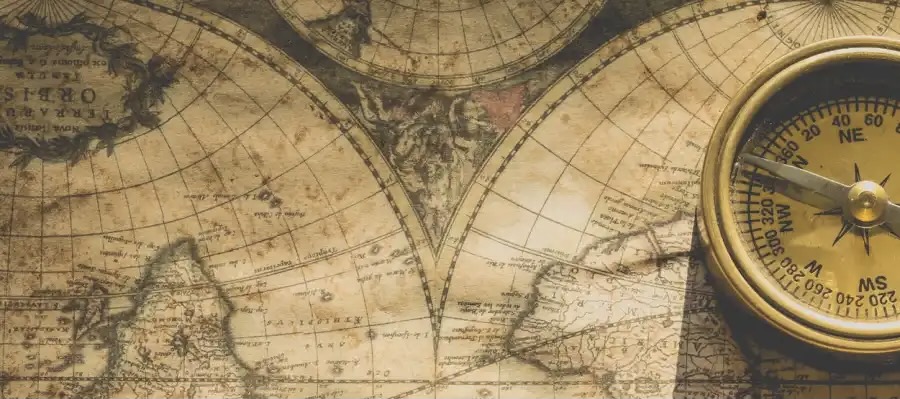One of my travel goals is to visit as many national parks in the United States as possible. The National Park Service offers a lifetime Golden Eagle Passport to seniors at age 62 for just $10. The pass admits the holder and all passengers in the vehicle to all national parks and monuments for the lifetime of the owner. Expect to show ID so the ranger can confirm the identity of the cardholder. I repeat, it’s a one-time $10 fee. I recently saw a website that said it was $10 per year which is incorrect. That’s why I linked to the national park website above. Click on Golden Eagle Passport above to check it out for yourself.
Another travel goal of mine is to visit UNESCO World Heritage Sites whenever possible. “The United Nations Educational, Scientific and Cultural Organization (UNESCO) seeks to encourage the identification, protection and preservation of cultural and natural heritage around the world considered to be of outstanding value to humanity.” (http://whc.unesco.org/en/about/) There are currently 1031 properties on the worldwide list, 23 of which are in the United States. The overwhelming majority (75-80%) are cultural sites with the rest made up of natural sites and some that are a combination.
These two goals coincided in a rare opportunity on our visit to Glacier Bay, Alaska, both a U.S. national park and a UNESCO World Heritage Site. You can get there only by air or sea so a cruise is the perfect way to see this spectacular natural site.
It’s difficult to capture and convey the immensity of the experience but the photo below of a cruise ship ahead of us in the inside passage helps. The ship looks like a small dot compared to the surrounding landscape.

A cruise ship in the inside passage of Alaska heading toward Glacier Bay
We entered Glacier Bay at 6:45 a.m. and the park rangers embarked at 7 a.m.

Glacier Bay National Park rangers arriving at the Oosterdam (photo by Sheryl)
We spent the entire day in Glacier Bay with park rangers narrating throughout the tour. Cruise ships don’t dock anywhere in Glacier Bay but the slow leisurely passage allowed ample time to appreciate the spectacular and inspirational scenery.

Entering Glacier Bay

Entering Glacier Bay

Glacier Bay
Glacier Bay is all about nature. There’s not a lot of history here; in fact, in geological terms, Glacier Bay is very young. A product of the Little Ice Age, just 250 years ago the bay didn’t exist at all. One enormous glacier filled the area, reaching it’s maximum size around the year 1750. When Captain George Vancouver surveyed the area in 1794, the glacier had retreated just 5 miles but by the time John Muir came in 1879 the retreat had reached 40 miles more leaving the bay in its wake. Today, that glacier has retreated further north leaving behind around a dozen smaller tidewater glaciers some of which are visible from the bay (Glacier Bay National Park brochure).
The first glacier we saw was Rendu Glacier.

Rendu Glacier
The Grand Pacific Glacier wouldn’t have been recognizable as a glacier at all to me without ranger narration. It looks gray or black rather than the distinctive blue ice because of the amount of moraine debris it has gathered.

Grand Pacific Glacier
Nearby Margerie Glacier, on the other hand, displays the distinctive blue ice that we expected. Unfortunately, we missed a picture of calving on Margerie Glacier. Calving is when chunks of ice break off the glacier and crash into the water.

Margerie Glacier

Margerie Glacier

Jim and I at Margerie Glacier
Before leaving Tarr Inlet where Grand Pacific and Margerie Glaciers were located, the captain turned the ship a full 360 degrees and then another 180 degrees so that everyone could get enough of the beautiful views. We spent enough time in the area that we even had lunch with the view.

Lunch with a view of Margerie Glacier
Then, as we proceeded back down Glacier Bay, we also saw Johns Hopkins Glacier, Lamplugh Glacier, and Reid Glacier.

Johns Hopkins Glacier

Lamplugh Glacier

Reid Glacier
We didn’t see a lot of wildlife but I read that humpback whales are often seen in Glacier Bay. We were excited to see some seals which Sheryl captured and allowed me to share.

Seals covering small islands in Glacier Bay (photo by Sheryl)

Seal resting on ice (photo by Sheryl)
Every day on this cruise exceeded the previous day in amazing scenery. Glacier Bay was both inspirational and unforgettable. Whether Glacier Bay was created by God or by chance, it was an experience of the highest spiritual nature.
Based on events of June 2015.
References:
Glacier Bay (brochure). National Park Service. U.S. Department of the Interior.
World Heritage. UNESCO, n.d. Web. 12 Dec. 2015.

Stunning pictures. It is definitely on my list of places to view. I have heard about that national park pass as well and what a great bargain that is! I think everyone needs to get out in our national parks and enjoy and explore them. There is so much beauty in our world just waiting to be seen! Thanks for the tour today. I will be sharing!
Thanks, Beth Ann. I agree. There is so much beauty all around us. Our national parks are treasures that we are so fortunate to have protected for generations to come.
Totally breathtaking!!
I know. Words fail me.
That was definitely a lunch with a view. I would just love to see a glacier, your pictures are wonderful.
Yes, the glaciers were absolutely stunning. Thank you!